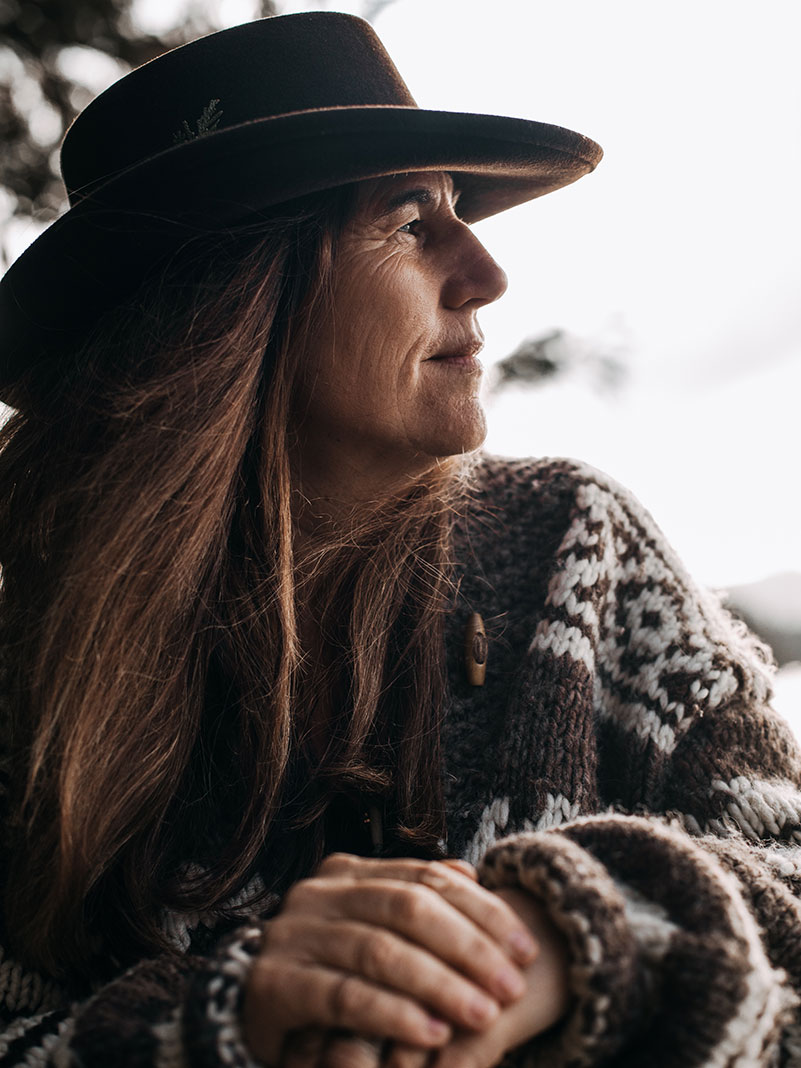Dianne Whelan loves to say, “Good stories have many beginnings.” Her six-year cross-continent journey on the Trans Canada Trail (TCT) officially began in St. John’s, Newfoundland, in 2015 when she was 50 years old as a search for hope.
Her journey also began many years prior in rural New Brunswick when her mother lit a fire in the snow using birchbark. And it started in the early 1990s when she first heard about the TCT after her family donated to its creation.
It’s these beginnings that led Whelan to hike, bike, paddle, ski and snowshoe a 27,000-kilometer continuous line across Canada, traveling from Atlantic to Arctic to Pacific oceans. The TCT is the world’s longest multi-use recreational trail, and tracing it seemed an ideal project, following Whelan’s previous documentary films covering Mount Everest and the Arctic.
Inside Dianne Whelan’s six-year, 27,000-kilometer continent-crossing odyssey
Whelan initially planned for the route to take her roughly two years—or approximately 500 days. On her tenth day, she acknowledged she hadn’t gone as far as she’d hoped to make it on the first. So, she burned her schedule. Continuing at a slow and steady pace, on August 1, 2021, she became the first person to complete both the land and water trails of the TCT—six years after she started.
Eight-thousand kilometers of the TCT’s route spans lakes and rivers. Whelan paddled them in a 15-foot Nova Craft Canoe Prospector, using a kayak paddle to evenly distribute the effort on her body. Her canoe was named Kwimu (loon) by members of the Mi’kmaq community.

“The [paddling routes] were my favorite part of the journey,” she says. “They brought me into traditional Indigenous communities. In some cases, I spent weeks to facilitate the reconciliation part of the journey, which was to listen, learn and witness.” She describes her journey not as an athletic achievement, but an ecological pilgrimage to honor the land and water, and to pay respect to Indigenous people.
On the shore of Lake Superior, she joined a week-long Ojibwe ceremony with a four-day fast. “I feel immense gratitude to have had those experiences. They made the journey profound,” she says.
Lessons to learn from the wilderness
Some aspects of her journey sound idyllic: a moose in the river near her tent, drinking the water she paddled on, and watching the northern lights along the Mackenzie River. But reality checks came often: paddling past forest fires, breaking ice with a hatchet, and learning of a fellow paddler drowning and another being attacked by a grizzly bear.
“To survive out there, you have to learn from mistakes,” Whelan says. “Adaptation, connection and timing are key. I didn’t survive because I’m special or smart or better. And there’s always an element of luck.”
“Every woman who goes off into the woods by herself is going to face fear, but in the six years I was out there, I never met anyone who posed a threat to me,” she adds. “Every fear I had, I packed out there—they weren’t in the landscapes, they were in me.”
Much of her journey was solo, but many hands helped along the way, including filmmaker Ann Verrall, who filmed portions for the upcoming documentary about the journey, titled 500 Days in the Wild. During the final 200 kilometers, Whelan paddled sections of the British Columbia coast with two Indigenous women, with her partner, and also by herself on the Salish Sea.
“Those last 20 minutes, I was bawling my eyes out,” Whelan says.
Welcomed ashore at journey’s end
Upon arrival at the end of the trail in Victoria, British Columbia, she followed traditional Coast Salish protocol. Cecelia Dick and LaVatta Frank, daughters of the late Pally Dick, Hereditary Chief of the Songhees, came to greet her. “I said who I was, the journey I had been on, and asked permission to come ashore. I gifted them tobacco wrapped with birchbark and cedar,” Whelan says.
“They welcomed me to shore. We walked to Mile 0 of the trail, held hands, and they sang the warrior song. Then they said, ‘We are one.’ These are people who are digging up graves in the back of residential schools right now. And they are there to honor this journey, and then to say that: ‘We are one.’ The Earth is our country. We are one.”
At the end of her journey, Whelan says she discovered what she was looking for: “I found hope.”
Find more about Dianne Whelan’s upcoming film and book at 500daysinthewild.com.
This article was first published in the Early Summer 2022 issue of Paddling Magazine. Subscribe to Paddling Magazine’s print and digital editions, or browse the archives.
Dianne Whelan spent six years traversing the longest recreational trail in the world—the 27,000-kilometer Trans Canada Trail—and filmed the experience. | Feature photo: Chelsea Brooke Roisum, CBR Photography









